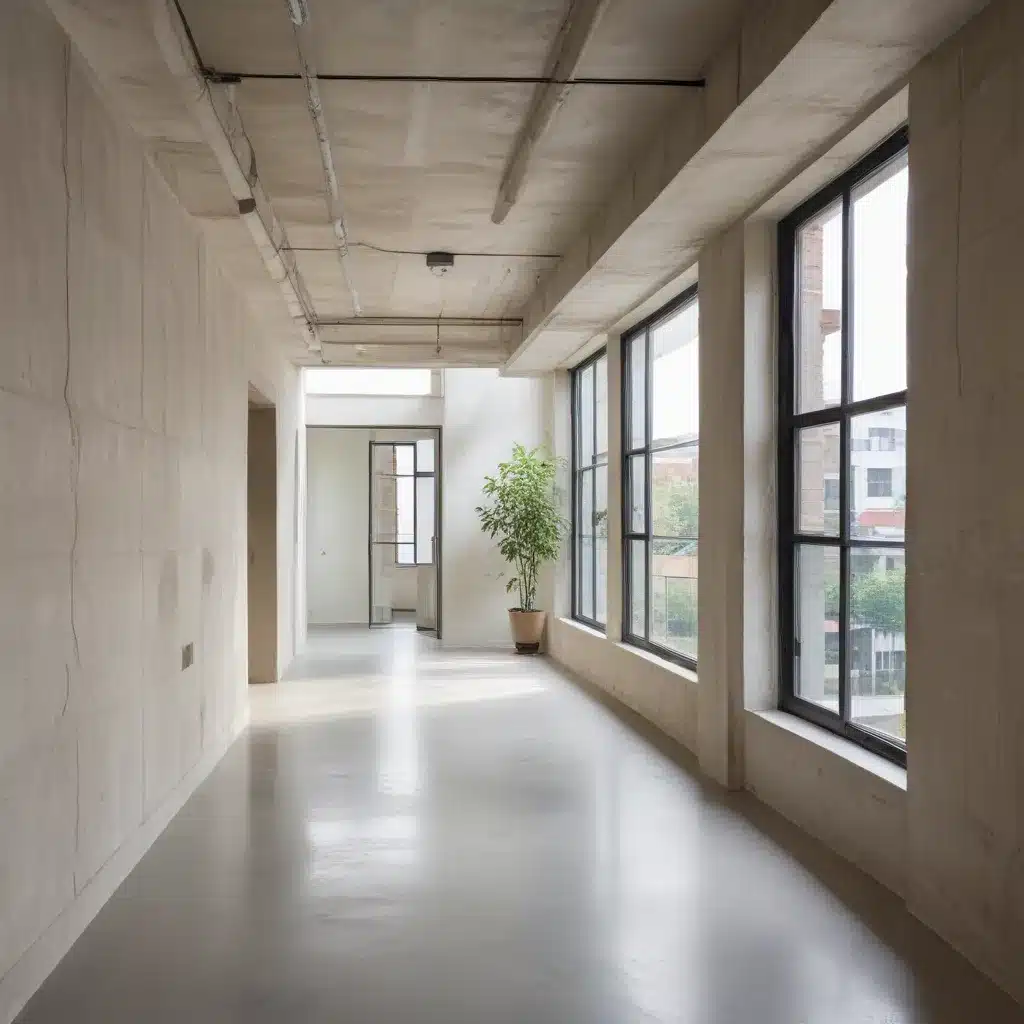
Natural ventilation is a fundamental consideration in any home renovation project. By leveraging the power of wind, temperature, and humidity differences, you can create comfortable, energy-efficient living spaces that promote better indoor air quality. As an experienced home improvement consultant, I’ll guide you through the principles, benefits, and challenges of natural ventilation, equipping you with the strategies to maximize airflow in your renovated spaces.
Understanding Natural Ventilation
Principles of Natural Ventilation
At its core, natural ventilation harnesses pressure differences to move fresh air through a building. These pressure differences can be caused by wind or the buoyancy effect created by temperature and humidity variations. Carefully designing the size and placement of openings, such as windows, vents, and doors, is critical to ensuring effective natural ventilation.
Wind, for instance, creates positive pressure on the windward side of a building and negative pressure on the leeward side. This pressure differential allows fresh air to enter through windward openings and be expelled through leeward ones. Temperature differences, on the other hand, drive the stack effect, where warm air rises and exits at the top, drawing in cooler air from lower openings.
Benefits of Natural Ventilation
Promoting natural ventilation in your renovated spaces offers numerous advantages:
- Energy Efficiency: By reducing the reliance on mechanical heating, cooling, and ventilation systems, natural ventilation can save 10-30% of a building’s total energy consumption.
- Improved Indoor Air Quality: Fresh air helps to alleviate odors, provide oxygen for occupants, and enhance overall thermal comfort.
- Enhanced Comfort: At interior air velocities of 160 feet per minute, the perceived temperature can be reduced by up to 5°F, creating a more comfortable living environment.
- Sustainability: Natural ventilation is an eco-friendly solution that minimizes a home’s carbon footprint and environmental impact.
Challenges of Natural Ventilation
While natural ventilation offers significant benefits, it is not without its challenges. One key limitation is its inability to effectively reduce humidity levels, making it less suitable for use in humid climates. Additionally, natural ventilation may not be able to provide 100% thermal comfort year-round, as it is dependent on outdoor environmental conditions.
Another consideration is the potential conflict between designing for natural ventilation and mechanical cooling. Naturally ventilated structures often feature an articulated plan and large openings, while air-conditioned buildings may be better served by a more compact design with sealed windows. Navigating this balance requires careful planning and understanding of the local climate and building requirements.
Evaluating Renovated Spaces
Identifying Ventilation Needs
Before embarking on a renovation, it’s crucial to assess the existing ventilation needs of your home. Consider factors such as the number of occupants, the presence of moisture sources (e.g., bathrooms, kitchens), and the potential for pollutant accumulation. Understanding these needs will help you determine the appropriate natural ventilation strategies to implement.
Assessing Existing Ventilation Systems
Evaluate the effectiveness of your home’s current ventilation systems, both natural and mechanical. Identify any compromises or inefficiencies, such as partition walls obstructing airflow or leaky duct systems undermining the performance of natural ventilation. This assessment will guide your renovation decisions and ensure that you make the most of your home’s natural ventilation potential.
Determining Renovation Strategies
Based on your evaluation, you can then decide on the most appropriate renovation strategies to maximize natural ventilation. This may involve strategic window placement, the incorporation of architectural features like wind towers or solar chimneys, or the integration of mechanical ventilation systems to supplement natural airflow.
Maximizing Airflow
Optimizing Window Placement
The strategic placement of windows is a crucial element in enhancing natural ventilation. Position windows on opposite walls to facilitate cross-ventilation, allowing fresh air to flow freely through the space. Consider orienting windows to capture the prevailing winds, and use louvered windows to capture breezes from multiple angles.
Leveraging Architectural Features
Historic and vernacular construction practices can provide valuable insights into natural ventilation strategies. Incorporate architectural elements like solar chimneys, wind towers, or evaporative cooling systems to harness the power of natural forces and enhance airflow throughout your renovated spaces.
Integrating Ventilation Systems
While natural ventilation should be the primary focus, the integration of mechanical ventilation systems, such as ceiling fans or exhaust fans, can supplement airflow in areas with limited access to natural breezes. This hybrid approach can help maintain a comfortable indoor environment and ensure adequate moisture and contaminant removal.
Sustainable Design Considerations
Energy Efficiency
By prioritizing natural ventilation, you can significantly reduce your home’s energy consumption and associated operating costs. This not only benefits the environment but also contributes to long-term savings for you as a homeowner.
Indoor Air Quality
Improved indoor air quality is a significant advantage of natural ventilation. By introducing fresh outdoor air, you can dilute and remove pollutants, odors, and excess humidity, creating a healthier living environment for you and your family.
Environmental Impact
Natural ventilation is an inherently eco-friendly solution, as it minimizes the need for energy-intensive mechanical systems. This aligns with the growing emphasis on sustainable home design and reduces the overall environmental impact of your renovation project.
Whether you’re embarking on a first-floor addition, a whole-home transformation, or simply seeking to optimize the ventilation in your existing living spaces, incorporating natural ventilation strategies can be a game-changer. By understanding the principles, evaluating your renovation needs, and maximizing airflow through strategic design, you can create comfortable, energy-efficient, and sustainable living spaces that truly reflect your vision.
For more inspiring renovation ideas and practical guidance, be sure to visit Reluctant Renovator, where experienced home improvement consultants like myself share our expertise to help transform your living spaces. Let’s work together to harness the power of natural ventilation and elevate your home to new levels of comfort and efficiency.



